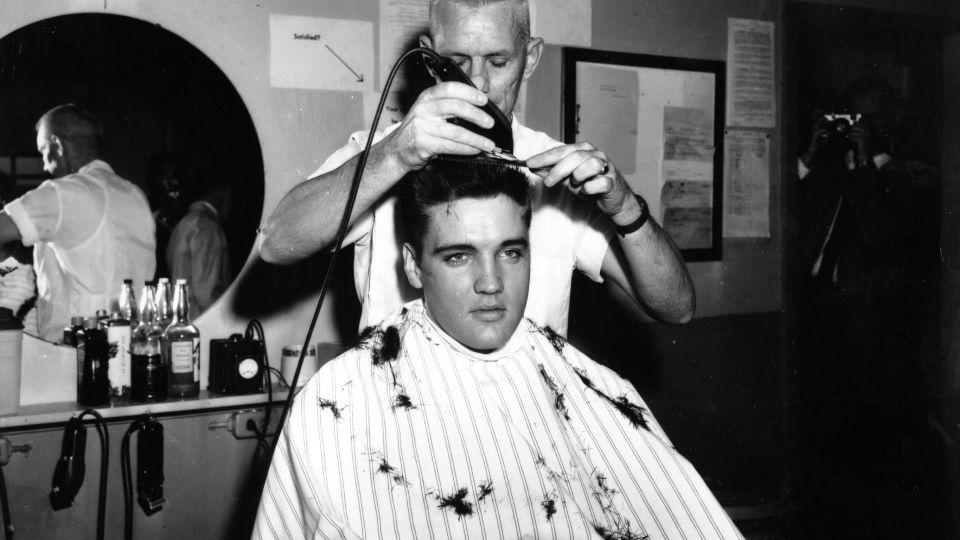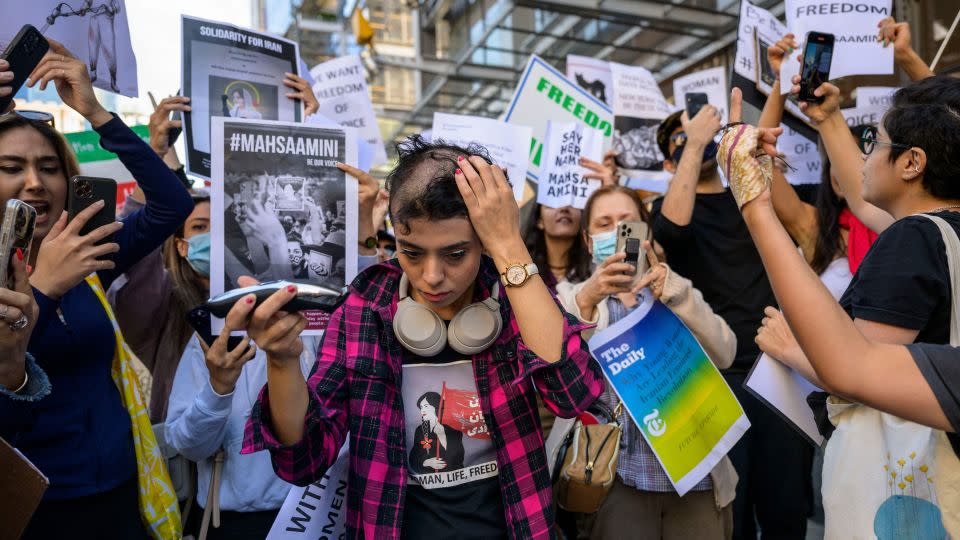Sinéad O’Connor and the bald history of the buzzcut
- Oops!Something went wrong.Please try again later.
- Oops!Something went wrong.Please try again later.
- Oops!Something went wrong.Please try again later.
“They wanted me to grow my hair really long,” the late Irish singer Sinéad O’Connor told Oprah Winfrey in 2014, “and wear miniskirts and all that kind of stuff because (record executives) reckoned I’d look much prettier. So I went straight round to the barber and shaved the rest of my hair off.”
O’Connor, who died at the age of 56 on Wednesday July 26, first debuted her buzzcut in 1987 when she was just 20 years old — two years after she signed her record deal. It was an act of defiance, a refusal that her appearance and femininity be commodified by the music industry. O’Connor’s baldness quickly became a cornerstone of her public image, and a visual shorthand for her rebellious disposition.
Today, the hair style is more commonplace. London-based youth culture magazine Dazed dubbed it the hair cut of 2020 after coronavirus lockdown restrictions in the UK lead to a surge in clipper-only crops. Celebrities such as Florence Pugh, Kristin Stewart, Amber Rose, Iris Law, Willow Smith and Saweetie have worn their buzz cuts with pride. Even though the style has entered the mainstream, a feeling of freedom still permeates its female wearers. In 2017 after shaving her head, actor Kate Hudson told Harper’s Bazaar she was surprised how much she warmed to the change. “The connection to (my hair) was powerful and I wasn’t prepared for that. It’s so liberating.”
But the shorn head has a complicated and contradictory history that has led to it becoming a symbol of non-conformism — particularly for women.
A history in hairlessness
In ancient cultures, before the mass production of hygiene products and proper plumbing systems, closely cropped hair protected communities from the spreading of head lice. Priests and priestesses in ancient Egypt were well known to shave their entire body to promote cleanliness. Soldiers of the Roman Empire also had short hair, unlike the Vikings of Scandinavia or Celtic fighters known for their typically long locks.

Buzzcuts were one of the earliest examples of form over function, at least in the beauty space. In the 1950s, the US military implemented shorn hair as a standardized haircut for men. Women would be buzzed too, if they didn’t fall in line with up-dos such as ponytail and buns. Identity and self expression through outward appearance was actively discouraged, and no one was safe from the enforced uniformity. In 1957, Elvis Presley was drafted into the US army and sent to the military barbers at Fort Chaffee in Arkansas. According to a Washington Post article from that same year, Presley watched his hair fall to the floor and quipped, “hair today, gone tomorrow.” The “jarhead” haircut — where hair is cut very tight to the skin leaving an island of roughly half an inch of length on top — is still popular in the US marines today.
In this context, bald heads signified homogeneity, utility and conformism.
Women and buzzcuts
Women, however, have long been shaving their heads to show solidarity with social injustice. In the 18th century, after the French revolution, some women chopped their hair off as a sign of respect to the friends who died at the guillotine. It was called hair “a la victimé,” because a guillotine death sentence required hastily cut hair to help the efficiency of the blade.
Even today, a female with a shaved head is a powerful symbol of protest. Britney Spears was penalized for paparazzi photographs showing her shearing off her long hair in 2007. “Bald and Broken” read the headlines that followed. It was considered a form of self flagellation — dismantling one’s beauty and social currency so publicly. The pictures were used by some as robust evidence of Spears’ declining mental health. But 16 years later during the Free Britney protests in 2021, fans and supporters buzzed their hair outside the courtrooms deliberating over Spears’ conservatorship.

In 2022, during the Iranian protests that followed the death of 22-year-old Mahsa Amini, Iranian women all over the world began cutting their hair (a sign of beauty the Islamic Republic orders is hidden) in the street during demonstrations, filming the act and posting it online. “We want to show them that we don’t care about their standards, their definition of beauty or what they think that we should look like,” 36-year-old Faezeh Afshan told CNN at the time. “It is to show that we are angry.”
But it wasn’t until the 1980s that the female buzzcut was given a global platform, when the look was adopted by the likes of Grace Jones, Annie Lennox and O’Connor herself.
In her memoir, Jones wrote that her baldness “made me look more abstract, less tied to a specific race or tribe.” With O’Connor, shaving her head similarly allowed her to exist outside of a prescribed box. “I wasn’t going to have any man telling me what to do,” she said in a 2022 interview, “or who to be.”
For more CNN news and newsletters create an account at CNN.com

